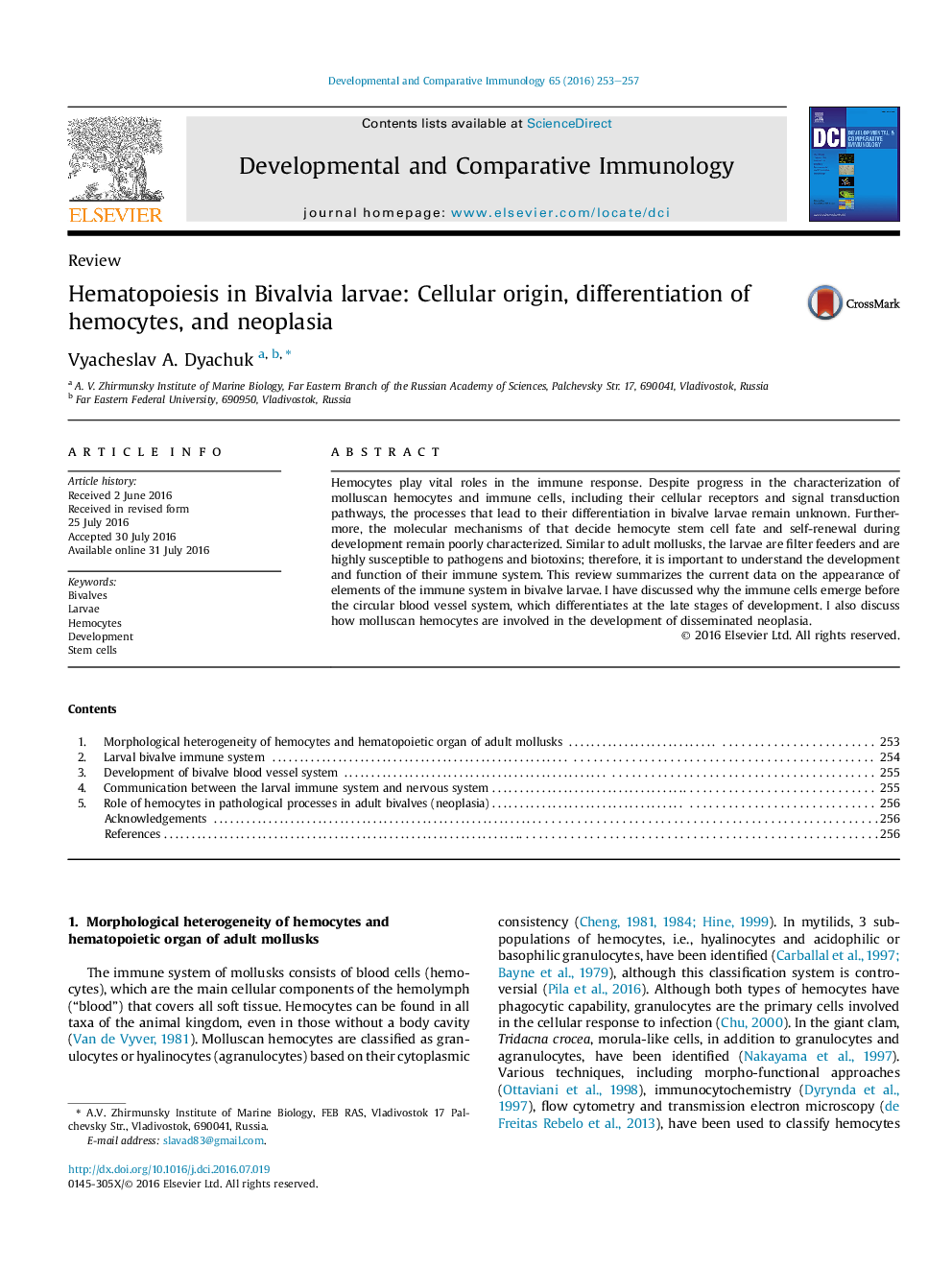| Article ID | Journal | Published Year | Pages | File Type |
|---|---|---|---|---|
| 2428761 | Developmental & Comparative Immunology | 2016 | 5 Pages |
•Morphological heterogeneity of hemocytes and hematopoietic organ of adult mollusks.•Larval bivalve immune system emergence is reviewed.•Development of bivalve blood vessel system is discussed.•Communication between larval immune system and nervous systems is explained.•The pathological role of hemocytes (neoplasia) in mollusks is outlined.
Hemocytes play vital roles in the immune response. Despite progress in the characterization of molluscan hemocytes and immune cells, including their cellular receptors and signal transduction pathways, the processes that lead to their differentiation in bivalve larvae remain unknown. Furthermore, the molecular mechanisms of that decide hemocyte stem cell fate and self-renewal during development remain poorly characterized. Similar to adult mollusks, the larvae are filter feeders and are highly susceptible to pathogens and biotoxins; therefore, it is important to understand the development and function of their immune system. This review summarizes the current data on the appearance of elements of the immune system in bivalve larvae. I have discussed why the immune cells emerge before the circular blood vessel system, which differentiates at the late stages of development. I also discuss how molluscan hemocytes are involved in the development of disseminated neoplasia.
